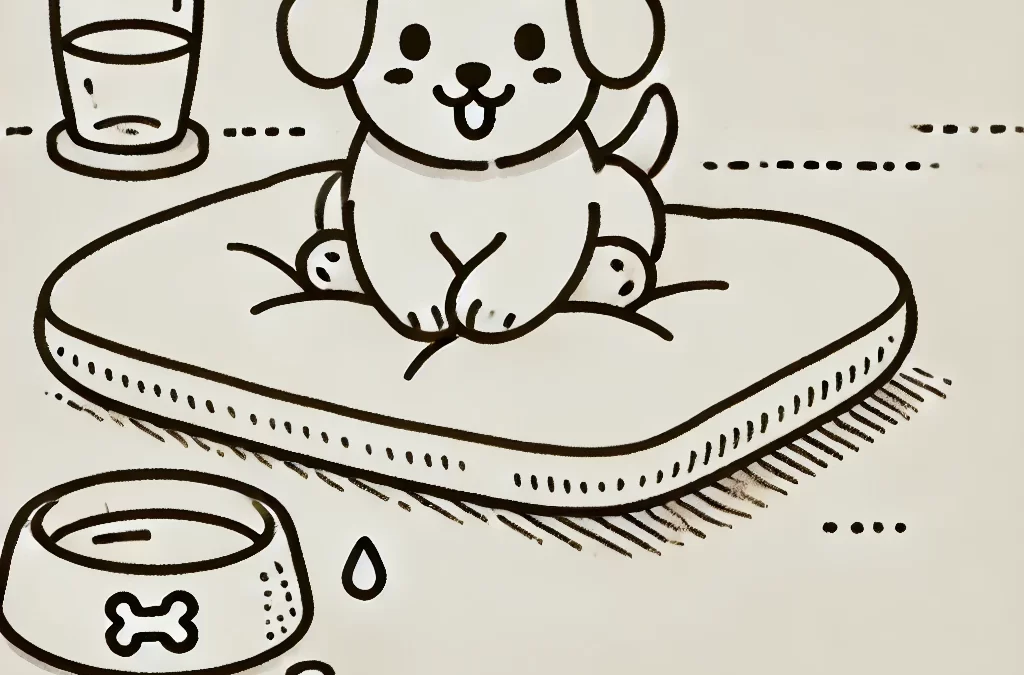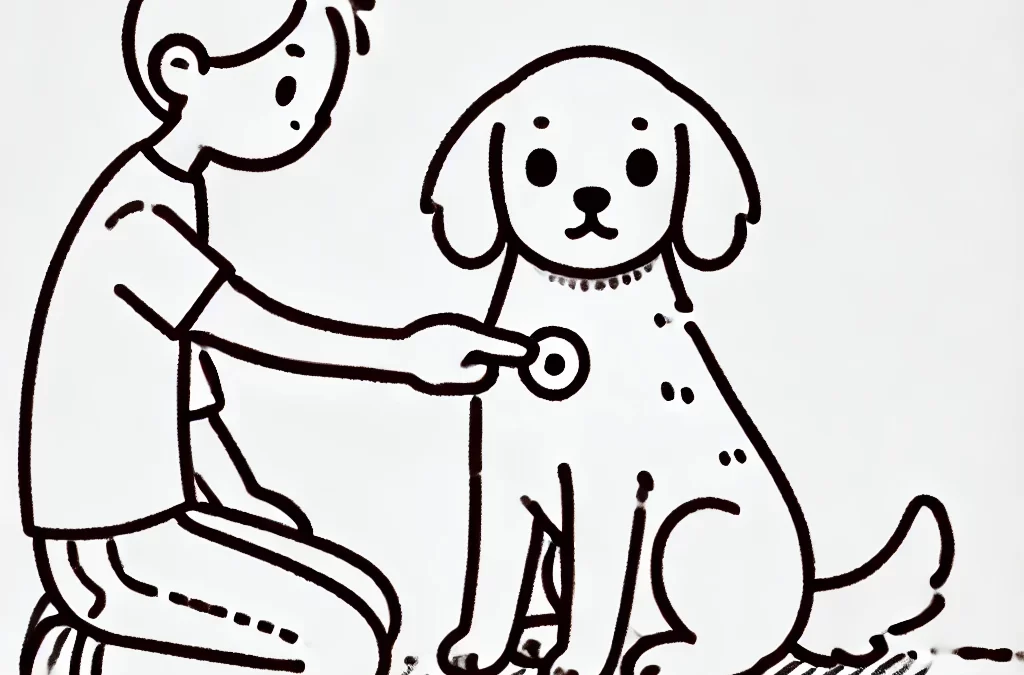
por TCMVET | 11 de febrero de 2025 | Cáncer y tumores en perros
Para los dueños de mascotas que se enfrentan al desgarrador diagnóstico de cáncer en sus amados compañeros felinos, el proceso puede estar lleno de incertidumbre. Si bien se recomiendan comúnmente tratamientos convencionales como cirugía, quimioterapia y radioterapia, muchos buscan alternativas para complementar estas opciones o, en algunos casos, como un enfoque holístico para el cuidado general. Una de las áreas más prometedoras es el uso de Remedios naturales para ayudar a retardar el crecimiento de tumores en gatos, proporcionando no sólo alivio físico sino también comodidad emocional tanto para la mascota como para el dueño.
El poder de la naturaleza en el tratamiento de tumores
Los remedios naturales aprovechan el poder terapéutico de las plantas, hierbas y otras sustancias naturales para promover la curación, reducir la inflamación y reforzar el sistema inmunológico. A diferencia de los tratamientos tradicionales que se centran principalmente en eliminar las células cancerosas, los remedios naturales tienen como objetivo mejorar la capacidad del cuerpo para combatir el cáncer desde dentro. Este enfoque holístico no se centra únicamente en el tumor en sí, sino que busca restablecer el equilibrio de todo el sistema, ofreciendo una solución integral para el tratamiento del cáncer en los gatos.
Remedios naturales clave para frenar el crecimiento de tumores en gatos
- Cúrcuma (Curcuma longa)
Uno de los remedios naturales más conocidos para el cáncer, cúrcuma contiene un compuesto llamado curcumina, que ha demostrado tener potentes propiedades antiinflamatorias, antioxidantes y anticancerígenas. La curcumina puede ayudar a retardar el crecimiento de los tumores al inhibir la proliferación de células cancerosas y promover la apoptosis (muerte celular programada). Además, puede ayudar a la función hepática, que es vital para la desintoxicación, especialmente durante el tratamiento del cáncer.
- Aceite de cannabidiol (CBD)
aceite de CBDEl CBD, derivado del cáñamo, es otro remedio natural poderoso que está ganando atención por su potencial en el tratamiento del cáncer. Los estudios han demostrado que el CBD puede ralentizar el crecimiento de los tumores al inducir la muerte celular en las células cancerosas y reducir la inflamación. Además, puede mejorar la calidad de vida de su gato al controlar el dolor y la ansiedad, que suelen acompañar a los tratamientos contra el cáncer.
- Seta Reishi (Ganoderma lucidum)
Los hongos reishi se han utilizado durante mucho tiempo en la medicina tradicional china (MTC) por sus propiedades inmunoestimulantes. Contienen betaglucanos que mejoran la función inmunológica y promueven la capacidad del cuerpo para combatir el cáncer. Al reforzar el sistema inmunológico y mejorar la vitalidad general, Hongos reishi Puede ayudar a retardar el crecimiento del tumor y mejorar la capacidad de su gato para hacer frente al cáncer.
- Raíz de astrágalo (Astragalus membranaceus)
A menudo se utiliza en la medicina tradicional china. Astrágalo Se sabe que el astrágalo mejora la función inmunitaria y reduce la inflamación. Al estimular la producción de glóbulos blancos y potenciar la respuesta inmunitaria, puede ayudar al organismo a combatir el cáncer de forma más eficaz y a ralentizar la progresión de los tumores.
- Té essiac
té essiac, una mezcla de cuatro hierbas (raíz de bardana, acedera, corteza de olmo resbaladizo y ruibarbo indio), es famosa por sus propiedades desintoxicantes y sus posibles efectos anticancerígenos. Se cree que el té funciona mejorando el sistema inmunológico, desintoxicando el cuerpo e inhibiendo el crecimiento de células cancerosas.
TCMVET Baituxiao: una interpretación moderna de la sabiduría antigua
Para los dueños de mascotas que buscan una aplicación moderna y específica de estos antiguos principios curativos, TCMVET Baituxiao se destaca como un producto específicamente formulado para ayudar a controlar los tumores en las mascotas. Combinando hierbas tradicionales chinas conocidas por sus propiedades anticancerígenas, como Bai Hua She She Cao y Dang GuiCon los avances modernos en suplementación a base de hierbas, TCMVET Baituxiao ofrece un enfoque equilibrado para el cuidado de los tumores.
- Reducción del crecimiento tumoral:Las hierbas que componen el Baituxiao de TCMVET se seleccionan cuidadosamente para que actúen juntas para inhibir el crecimiento de tumores y reducir el tamaño de los tumores existentes. Su fórmula ayuda a controlar las células cancerosas y, al mismo tiempo, promueve la salud general.
- Apoyando la inmunidad:Al estimular el sistema inmunológico, TCMVET Baituxiao ayuda al cuerpo de su gato a combatir el cáncer de manera más efectiva y prevenir su recurrencia.
- Minimizar los efectos secundarios:Uno de los principales beneficios de utilizar TCMVET Baituxiao es su capacidad para reducir la inflamación y el malestar, ayudando a los gatos a mantenerse cómodos mientras se someten al tratamiento.
La incorporación de TCMVET Baituxiao al régimen de cuidado de su gato puede ofrecer beneficios significativos como parte de un enfoque holístico e integrado para el manejo de tumores.
¿Por qué elegir remedios naturales para tu gato?
La elección de remedios naturales para frenar el crecimiento de tumores en gatos no consiste en sustituir los tratamientos convencionales, sino en mejorar la capacidad del organismo para curarse a sí mismo. Los remedios naturales ofrecen una alternativa a los efectos secundarios severos que suelen producirse con la quimioterapia y la radioterapia, y funcionan en conjunto con los tratamientos tradicionales para mejorar la salud y el bienestar general.
Mediante el uso de remedios naturales como cúrcuma, aceite de CBD, Hongos reishiy Astrágalo, junto con productos como TCMVET BaituxiaoLos dueños de mascotas pueden ayudar a sus gatos a sentirse mejor, vivir más tiempo y enfrentar el cáncer con resiliencia.
Pensamientos finales
El tratamiento del tumor de un gato con remedios naturales ofrece un enfoque compasivo y holístico que busca nutrir y apoyar el cuerpo en lugar de simplemente atacar el tumor. Estos remedios pueden mejorar los tratamientos convencionales al mejorar el bienestar general, reforzar la inmunidad y reducir la inflamación. Siempre consulte con su veterinario antes de agregar cualquier tratamiento nuevo para garantizar la mejor atención posible para su compañero felino.

por TCMVET | 10 de febrero de 2025 | Cáncer y tumores en perros
El cáncer en los gatos es un diagnóstico devastador, pero comprender el papel del sistema inmunológico puede brindar información sobre cómo podemos ayudar a nuestros compañeros felinos. El sistema inmunológico es el mecanismo de defensa natural de nuestro cuerpo, que trabaja incansablemente para combatir infecciones, células anormales e incluso posibles tumores. Desafortunadamente, los tumores a veces pueden evadir el sistema inmunológico, lo que permite que el cáncer crezca y se propague. Entonces, surge la pregunta: ¿Cómo podemos mejorar el sistema inmunológico de nuestro gato para combatir el cáncer y reducir el riesgo de formación de tumores?
La conexión entre los tumores felinos y el sistema inmunológico
El sistema inmunitario desempeña un papel fundamental en la prevención del desarrollo del cáncer. Identifica y destruye las células anormales, incluidas aquellas que podrían convertirse en tumores. Sin embargo, algunas células cancerosas tienen la capacidad de evadir o inhibir el sistema inmunitario, lo que dificulta que el cuerpo las reconozca y las destruya.
En los gatos, esta evasión inmunitaria puede producirse de varias maneras. Los tumores pueden desarrollar puntos de control inmunitarios o mecanismos que impidan que las células inmunitarias los ataquen. También pueden producir sustancias que suprimen las respuestas inmunitarias. Esto significa que, incluso si el sistema inmunitario de un gato es fuerte, ciertos tipos de cáncer pueden progresar si el sistema inmunitario no funciona de forma óptima.
Sin embargo, al apoyar y fortalecer el sistema inmunológico de su gato, puede ayudar a su cuerpo a luchar contra estas células anormales y potencialmente retardar la progresión de tumores existentes o reducir el riesgo de que se formen otros nuevos.
Cómo funciona el sistema inmunológico en los gatos
Antes de profundizar en las formas de reforzar el sistema inmunológico, es esencial comprender cómo funciona el sistema inmunológico en los gatos. Al igual que los humanos, los gatos tienen una red de defensa intrincada compuesta por varias células y órganos que trabajan juntos para protegerlos de las enfermedades. Los actores clave incluyen:
- Glóbulos blancos (células T, células B, macrófagos):Estas células son responsables de identificar y atacar a los invasores dañinos, como virus y células cancerosas.
- Ganglios linfáticos y bazo:Estos órganos filtran el líquido linfático y la sangre, respectivamente, atrapando patógenos dañinos y células anormales.
- AnticuerposProducidas por las células B, estas proteínas ayudan a neutralizar los patógenos y atacar las células cancerosas.
- Citocinas:Son moléculas de señalización que ayudan a coordinar la respuesta inmune y garantizan que las células inmunes funcionen correctamente.
El papel del sistema inmunitario en la prevención del cáncer reside en su capacidad de detectar y destruir células mutadas o dañadas antes de que se vuelvan cancerosas. Sin embargo, cuando el sistema inmunitario está debilitado, pierde eficacia en la realización de estas tareas, lo que permite que las células cancerosas crezcan sin control.
Formas de reforzar el sistema inmunológico de tu gato
Existen varias estrategias para mejorar el sistema inmunológico de su gato, tanto a través de cambios en la dieta y el estilo de vida como a través de suplementos específicos. A continuación, se presentan algunas formas de fortalecer la inmunidad de su gato y reducir potencialmente el riesgo de tumores:
1. Proporcionar una dieta equilibrada y rica en nutrientes
Una dieta saludable es la base de un sistema inmunológico fuerte. Los gatos necesitan una dieta equilibrada rica en nutrientes esenciales, como proteínas, vitaminas y minerales. Una dieta de alta calidad y adecuada para su especie que imite lo que comerían en la naturaleza es fundamental para mantener la salud general y la función inmunológica.
- Antioxidantes:Los alimentos ricos en antioxidantes, como las vitaminas A, C y E, pueden ayudar a proteger las células inmunitarias del daño oxidativo. Los antioxidantes neutralizan los radicales libres en el cuerpo, que pueden debilitar el sistema inmunitario y contribuir al desarrollo del cáncer.
- Ácidos grasos omega-3:Los ácidos grasos omega-3, presentes en el aceite de pescado y en ciertos aceites vegetales, tienen propiedades antiinflamatorias que ayudan a regular las respuestas inmunitarias. Pueden contribuir a una función inmunitaria saludable y también pueden ayudar a reducir la inflamación asociada con el cáncer.
- Zinc y selenioAmbos minerales son esenciales para el funcionamiento adecuado del sistema inmune y están involucrados en la producción y respuesta de las células inmunes.
2. Incorporar suplementos que estimulen el sistema inmunológico
Existen varios suplementos diseñados específicamente para reforzar el sistema inmunológico de los gatos. Siempre consulte a su veterinario antes de añadir cualquier suplemento a la dieta de su gato, pero algunos de los potenciadores inmunológicos más comunes son:
- Calostro:El calostro, un tipo de leche que producen los mamíferos inmediatamente después del nacimiento, contiene anticuerpos y factores de crecimiento que refuerzan la función inmunitaria. Puede mejorar la actividad inmunitaria en los gatos y ayudar a protegerlos contra el cáncer.
- Extractos de hongos:Ciertos hongos, como el reishi y el maitake, son conocidos por sus propiedades inmunoestimulantes. Estos hongos contienen compuestos que pueden activar las células inmunitarias y mejorar su capacidad para combatir las células cancerosas.
- Probióticos:Un microbioma intestinal saludable es fundamental para la salud inmunológica. Los probióticos pueden ayudar a mantener una flora intestinal equilibrada, lo que a su vez favorece la función inmunológica.
3. Reducir el estrés
Se sabe que el estrés crónico suprime el sistema inmunológico, lo que lo hace menos eficaz para defenderse del cáncer y otras enfermedades. Los gatos que sufren estrés durante períodos prolongados son más vulnerables a las enfermedades, incluido el cáncer. Para reducir el estrés de su gato:
- Proporcionar un ambiente seguro y tranquilo.:Los gatos son animales sensibles y pueden estresarse fácilmente con los cambios en su entorno o rutina. Asegúrese de que su gato tenga un espacio tranquilo y seguro donde pueda retirarse cuando lo necesite.
- Juego y estimulación mental:El juego y la participación regulares pueden ayudar a aliviar el estrés. Los juguetes interactivos, los postes para rascar y los comederos con forma de rompecabezas pueden mantener a tu gato mentalmente estimulado y evitar el estrés inducido por el aburrimiento.
- Consistencia:Intente mantener una rutina diaria constante para su gato, que incluya horarios de alimentación, tiempo de juego y aseo. La previsibilidad ayuda a los gatos a sentirse seguros y reduce la ansiedad.
4. Chequeos y exámenes veterinarios regulares
Los controles veterinarios regulares son fundamentales para mantener la salud general de su gato y garantizar que su sistema inmunológico funcione de manera óptima. Los exámenes y las revisiones de rutina permiten la detección temprana de posibles problemas de salud, incluidos los tumores. Cuanto antes se detecte un tumor, mayores serán las probabilidades de éxito del tratamiento.
- Vacunas:Mantenga las vacunas de su gato al día para prevenir infecciones que pueden debilitar el sistema inmunológico y contribuir a la progresión del cáncer.
- Análisis de sangre:Los análisis de sangre regulares pueden ayudar a controlar el sistema inmunológico de su gato e identificar cualquier problema de manera temprana.
5. Considere tratamientos holísticos
Algunos tratamientos holísticos, como la acupuntura, las hierbas y la homeopatía, pueden ayudar a estimular el sistema inmunológico y apoyar el tratamiento del cáncer. Por ejemplo, se ha demostrado que ciertas hierbas chinas mejoran la respuesta inmunitaria y podrían complementar los tratamientos convencionales para gatos con cáncer.
Conclusión: Cómo fortalecer el sistema inmunológico de tu gato
El sistema inmunológico desempeña un papel fundamental en la prevención y la lucha contra el cáncer en los gatos. Si bien los tumores a veces pueden evadir las defensas del sistema inmunológico, proporcionarle a su gato una dieta equilibrada, suplementos que fortalezcan su sistema inmunológico, reducir el estrés y recibir atención veterinaria regular puede ayudar a mejorar sus posibilidades de mantenerse sano y reducir el riesgo de desarrollar tumores.
Aunque no existe una forma infalible de prevenir el cáncer, fortalecer el sistema inmunológico de su gato con estas prácticas le ofrece la mejor posibilidad de mantener una buena salud durante muchos años. Trabaje siempre en estrecha colaboración con su veterinario para diseñar un plan de refuerzo inmunológico adecuado a las necesidades específicas de su gato. Con el cuidado adecuado, el sistema inmunológico de su gato puede convertirse en un aliado formidable en la lucha contra el cáncer.

por TCMVET | 9 de febrero de 2025 | Cáncer y tumores en perros
Cuando a su gato le diagnostican un tumor, puede ser una experiencia abrumadora tanto para usted como para su compañero felino. Las opciones de tratamiento tradicionales suelen centrarse en la cirugía, la quimioterapia o la medicación, pero existe un enfoque emergente que se centra en la salud holística: ejercicio moderadoLa idea puede sonar sorprendente, pero las investigaciones sugieren que el ejercicio puede ser un aliado valioso para reforzar el sistema inmunológico de su gato, mejorando potencialmente su calidad de vida y ayudando en su recuperación. En este artículo, exploraremos cómo el ejercicio moderado puede beneficiar la inmunidad y la salud general de su gato durante el tratamiento del tumor.
La relación entre el ejercicio y la inmunidad: lo que necesita saber
Antes de profundizar en los detalles, primero entendamos la ciencia detrás del ejercicio y el sistema inmunológico. Se ha demostrado que, tanto en humanos como en animales, la actividad física regular mejora la función inmunológica al estimular la producción de glóbulos blancos (que combaten las infecciones), mejorar la circulación y promover la eliminación de toxinas del cuerpo. Esto significa que, incluso durante el tratamiento del cáncer, el movimiento suave puede apoyar los mecanismos de defensa naturales de su gato, lo que le facilitará combatir las infecciones y recuperarse de las enfermedades.
Por qué la moderación es clave
El ejercicio moderado, a diferencia de la actividad física intensa, es un enfoque de bajo impacto que se centra en promover la movilidad sin estresar el cuerpo. Para un gato con un tumor, el esfuerzo excesivo puede ser perjudicial, ya que provoca fatiga o agrava los síntomas. Por lo tanto, es fundamental lograr un equilibrio: el objetivo es incorporar actividades que sean agradables y estimulantes, pero que no fuercen el cuerpo de su gato.
Entonces, ¿cómo puedes asegurarte de que tu gato realiza la cantidad adecuada de ejercicio?
1. Sesiones de juego breves: céntrate en la participación mental
Es posible que los gatos con tumores no tengan los mismos niveles de energía que tenían antes del diagnóstico, y es importante no abrumarlos. En lugar de largos momentos de juego, intente que Sesiones de juego cortas y frecuentesDiez o quince minutos de juego interactivo con sus juguetes favoritos pueden ser suficientes para estimular tanto su cuerpo como su mente. Ya sea una varita de plumas, un puntero láser o una simple pelota, mantener a tu gato mentalmente activo es tan importante como la actividad física.
Estas sesiones de juego ayudan a mantener el tono muscular y la flexibilidad, a la vez que estimulan la circulación, todo lo cual contribuye a mejorar la inmunidad. La clave es la constancia: intente que estas sesiones sean una parte habitual del día de su gato, ajustando la duración de cada una de ellas en función de su nivel de comodidad.
2. Fomente la exploración con movimientos fáciles y seguros
Si tu gato está acostumbrado a ser activo y curioso, anímalo a Explorar entornos con bajo estrés Dentro de su hogar. A los gatos les encanta deambular, e incluso los movimientos pequeños y controlados pueden ser beneficiosos. Por ejemplo, permítales moverse entre habitaciones o investigar nuevas áreas de la casa. Mantenga su entorno seguro, libre de obstáculos que puedan causar lesiones, y asegúrese de que haya lugares de descanso acogedores cerca para cuando necesiten descansar.
Ofrecer oportunidades de movimiento a lo largo del día ayudará a promover el drenaje linfático, lo que puede ayudar a la desintoxicación. Este tipo de movimiento suave también puede ayudar a mantener la masa muscular y la salud de las articulaciones, lo cual es esencial para el bienestar general.
3. Integrar paseos suaves o tiempo al aire libre
Para los gatos que disfrutan estar al aire libre (o si tienes un recinto exterior seguro), Paseos suaves Puede ser una forma fantástica de estimular el movimiento. Pasear con tu gato con correa (si se siente cómodo con ella) le permite explorar y estirar las patas, lo que mejora la circulación y le ofrece un cambio de escenario.
Sin embargo, siempre mantén el ejercicio breve y evita el clima cálido o húmedo, ya que esto puede generar estrés adicional en el cuerpo de tu gato. El objetivo es hacer que estas sesiones al aire libre sean agradables y sin estrés, no extenuantes.
4. Masaje y estiramiento: ejercicio indirecto
Cuando su gato tiene un tumor, puede experimentar tensión o malestar en áreas específicas de su cuerpo. Masaje suave Puede ser una excelente manera de mejorar la circulación sin necesidad de que su gato haga ningún esfuerzo físico. Las caricias suaves y los estiramientos suaves pueden ayudar a mejorar el flujo sanguíneo y prevenir la rigidez.
A algunos gatos también les gusta que los estiren suavemente, en particular la espalda y las patas. Estos movimientos pueden ayudar a prevenir la atrofia muscular y promover la relajación. Como siempre, observe las reacciones de su gato; si parece incómodo o se resiste, retírese y pruebe algo más suave.
5. Adapte el enfoque a sus necesidades
Cada gato es único y su respuesta al ejercicio variará según el tipo y el estadio del tumor, su edad y su estado de salud general. Es fundamental Adapte su enfoque en función de la condición de su gato.Algunos gatos pueden necesitar más descanso, mientras que otros se sentirán mejor con un poco más de actividad. Comuníquese con su veterinario para evaluar qué cantidad de ejercicio es adecuada para la situación específica de su gato.
El equilibrio adecuado entre descanso y actividad puede ayudar a que su gato se sienta más cómodo, aumente sus niveles de energía y favorezca su sistema inmunológico durante el tratamiento. Controle siempre los niveles de energía y el comportamiento de su gato para asegurarse de que no se esfuerce demasiado.
El papel de la dieta y los suplementos
Si bien el ejercicio desempeña un papel fundamental en el fortalecimiento de la inmunidad, es esencial combinarlo con una dieta adecuada y suplementos. Ofrecerle a su gato alimentos de alta calidad y nutricionalmente equilibrados es esencial, especialmente durante el tratamiento contra el cáncer. Además, considere incorporar suplementos que refuerzan el sistema inmunológico como ácidos grasos omega-3, antioxidantes y remedios herbales específicos para mejorar su sistema de defensa.
Suplementos a base de hierbas como Chuanxiong (levístico de Sichuan), Hongos reishiy cúrcuma Puede tener propiedades beneficiosas para los pacientes con cáncer. Siempre consulte con su veterinario antes de agregar nuevos suplementos a la rutina de su gato.
Conclusión: Un camino suave hacia la sanación
Es fácil asumir que un diagnóstico como el cáncer significa que su gato debe descansar todo el tiempo, pero la cantidad adecuada de ejercicio moderado Puede desempeñar un papel fundamental en el mantenimiento de su salud y el fortalecimiento de su inmunidad. Mediante sesiones de juego breves, paseos suaves, exploración segura y masajes ocasionales, puede ayudar a su gato a mantenerse activo de una manera que favorezca los procesos naturales de curación de su cuerpo.
Recuerda, el objetivo es moderación—Nunca se debe obligar a hacer ejercicio, sino alentarlo de una manera que se adapte al nivel de comodidad de su gato. Escuche siempre las señales de su gato y trabaje en estrecha colaboración con su veterinario para asegurarse de que las actividades elegidas sean seguras y beneficiosas. Con paciencia, amor y la cantidad adecuada de movimientos suaves, puede ayudar a su gato a superar su cáncer con fuerza y vitalidad.

por TCMVET | 7 de febrero de 2025 | Cáncer y tumores en perros
La quimioterapia puede ser un tratamiento que salve la vida de los perros con cáncer, pero suele tener efectos secundarios que afectan su calidad de vida. Si bien la quimioterapia para perros suele ser menos agresiva que para los humanos, muchos perros aún experimentan Problemas digestivos, fatiga, pérdida de apetito e inmunidad debilitada.Entendiendo cómo minimizar las molestias y proporcionar la información adecuada Atención nutricional y de apoyo Puede marcar una diferencia significativa en el bienestar de su perro durante el tratamiento.
Efectos secundarios comunes de la quimioterapia en perros
🐶 Problemas gastrointestinales – Los vómitos, la diarrea, las náuseas y la pérdida de apetito son comunes debido al impacto de la quimioterapia en las células del revestimiento del estómago que se dividen rápidamente.
🐶 Fatiga y debilidad – Es posible que su perro esté más cansado de lo habitual y prefiera períodos de descanso más largos.
🐶 Inmunidad reducida – La quimioterapia puede reducir el recuento de glóbulos blancos, lo que hace que su perro sea más propenso a sufrir infecciones.
🐶 Pérdida de pelo (en ciertas razas) – Si bien la mayoría de los perros no pierden mucho pelo, las razas con pelaje en continuo crecimiento (por ejemplo, los caniches) pueden experimentar un adelgazamiento notable.
🐶 Úlceras en la boca y babeo – Algunos perros desarrollan llagas en la boca, lo que provoca molestias al comer.
¿Cómo aliviar los efectos secundarios de la quimioterapia?
1. Cómo controlar las náuseas y los vómitos
- Ofrezca comidas pequeñas y frecuentes en lugar de porciones grandes.
- Ofrezca alimentos suaves y de fácil digestión como Pollo hervido, arroz blanco y calabaza.
- Jengibre (fresco o en forma de suplemento) puede ayudar a reducir las náuseas.
- Si los vómitos persisten, consulte a su veterinario sobre medicamentos contra las náuseas como Cerenia (maropitante).
2. Favorece el apetito y previene la pérdida de peso
- Caliente ligeramente la comida de su perro para realzar el aroma y animarlo a comer.
- Pruebe alimentos ricos en calorías y nutrientes como huevos cocidos, carnes magras y requesón.
- Considere agregar caldo de huesos o leche de cabra a las comidas para una mayor hidratación y nutrición.
- Si su perro rechaza la comida, los estimulantes del apetito como Mirtazapina Puede ayudar.
3. Prevención de la diarrea y la deshidratación
- Usar probióticos (por ejemplo, FortiFlora) para apoyar la salud intestinal.
- Alimentar con alimentos ricos en fibra soluble como calabaza enlatada o batatas al vapor.
- Garantizar el acceso constante a agua fresca y ofrecer Soluciones electrolíticas Si la diarrea persiste.
- Consulte a su veterinario si la diarrea dura más de 24 horas o incluye sangre.
4. Fortalece el sistema inmunológico
- Incluir alimentos ricos en antioxidantes como los arándanos, la cúrcuma y los ácidos grasos omega-3.
- Hongos medicinales (por ejemplo, Cola de pavo, reishi) puede ayudar a modular la función inmune.
- Evite las dietas crudas durante la quimioterapia, ya que el sistema inmunológico debilitado aumenta los riesgos de infección.
5. Manejo de la fatiga y la debilidad
- Permita que su perro descanso extra pero fomente actividades ligeras como caminatas cortas para la circulación.
- Proporcionar una Espacio de descanso cómodo y cálido. con ropa de cama suave.
- Considere una terapia de masaje suave o acupresión para aliviar la tensión y mejorar la relajación.
6. Cuidado de las llagas en la boca y el babeo
- Oferta comida blanda o humedecida para reducir la irritación.
- Utilice productos seguros para mascotas enjuagues bucales (por ejemplo, solución de clorhexidina) Para prevenir infecciones.
- El aceite de coco se puede aplicar a las encías por sus propiedades calmantes y antibacterianas.
Suplementos que pueden ayudar
🌿 Cardo mariano – Apoya la desintoxicación del hígado de los medicamentos de quimioterapia.
🌿 Aceite de CBD – Puede ayudar a aliviar el dolor, las náuseas y la inflamación.
🌿 L-glutamina – Apoya la salud del revestimiento intestinal y reduce el riesgo de diarrea.
🌿 Ácidos grasos omega-3 (aceite de pescado) – Proporciona beneficios antiinflamatorios y apoya la salud inmunológica.
¿Cuándo contactar a su veterinario?
🚨 Vómitos o diarrea persistentes que duran más de 24 horas.
🚨 Letargo severo o colapso
🚨 Signos de infección (fiebre, ganglios linfáticos inflamados, jadeo excesivo)
🚨 Pérdida de apetito durante más de dos días
🚨 Sangrado o hematomas incontrolados
Pensamientos finales
El manejo de los efectos secundarios de la quimioterapia en perros requiere un enfoque equilibrado combinatorio Apoyo nutricional, cuidados domiciliarios y orientación veterinaria.Si supervisa de cerca la respuesta de su perro y realiza los ajustes necesarios, puede ayudarlo a sobrellevar el tratamiento. mayor comodidad y resiliencia.

por TCMVET | 7 de febrero de 2025 | Cáncer y tumores en perros
Descubrir un bulto en el cuerpo de su perro puede ser alarmante. ¿Se trata simplemente de un tumor graso inofensivo o podría ser algo más grave? Muchos dueños de mascotas dudan entre controlar el bulto en casa o acudir corriendo al veterinario. La clave es saber evaluar adecuadamente el bulto y reconocer los signos de advertencia que requieren atención médica.
Este artículo presenta una guía práctica y directa para que los dueños de mascotas evalúen los bultos y protuberancias de su perro, ayudándole a tomar decisiones informadas sobre cuándo buscar atención veterinaria.
Guía paso a paso para revisar el bulto de su perro
🖐 1. Utilice el método de la “regla de cinco”
Al examinar un bulto en su perro, evalúe estos cinco factores:
1️⃣ Tamaño – ¿El bulto es más pequeño que un guisante o va creciendo con el tiempo?
2️⃣ Forma – ¿Es redondo y liso o irregular y lleno de baches?
3️⃣ Textura – ¿Es suave y móvil o firme y está adherido al tejido subyacente?
4️⃣ Color y superficie – ¿La piel sobre el bulto está normal, enrojecida o ulcerada?
5️⃣ Índice de crecimiento – ¿Ha cambiado de tamaño en cuestión de semanas o meses?
🐾 2. La “prueba de los dos dedos”
Mueva suavemente el bulto entre los dedos. Si lo siente libremente movible debajo de la piel, es más probable que sea benigno (como un lipoma). Si es firmemente unido En tejidos más profundos, podría ser más preocupante.
🔍 3. Observar cualquier síntoma adicional
Comprobar si hay cambios en el comportamiento de tu perro y su salud en general. ¿Están comiendo bien? ¿Están perdiendo peso? ¿Se rascan o lamen el bulto excesivamente? Estas pistas pueden ayudar a determinar si el bulto está causando molestias o efectos sistémicos.
Tipos comunes de bultos y cuándo preocuparse
🔹 Lipomas (tumores grasos)
✅ Suave, redondo y móvil.
✅ Común en perros mayores o con sobrepeso.
✅ Generalmente inofensivo, pero debe vigilarse si crece repentinamente.
🔹 Quistes sebáceos
✅ Lleno de una sustancia espesa, blanca o amarillenta.
✅ Puede romperse o infectarse
✅ A menudo no es grave, pero puede ser necesario drenarlo o extirparlo si es problemático.
🔹 Tumores de mastocitos (MCT)
🚨 A menudo aparecen rojos, hinchados o ulcerados.
🚨 Puede cambiar de tamaño rápidamente debido a la liberación de histamina.
🚨 Requieren evaluación veterinaria inmediata, ya que pueden ser agresivos.
🔹 Histiocitomas
✅ Común en perros jóvenes, generalmente en la cabeza o las patas.
✅ Aparecen como bultos rojos, elevados y con forma de botón.
✅ A menudo desaparecen por sí solos, pero aún así conviene controlarlos.
🔹 Sarcomas de tejidos blandos
🚨 Firmes, profundos y de crecimiento lento.
🚨 A menudo no me siento bien definido
🚨 Puede ser invasivo y puede requerir extirpación quirúrgica.
¿Cuándo debes acudir al veterinario?
📌 Se requiere visita veterinaria inmediata si:
- El bulto crece rápidamente o cambia de forma
- Es firmemente unido A las estructuras subyacentes
- Hay sangrado, ulceración o infección
- El bulto causa dolor o malestar.
- Tu perro se muestra Otros síntomas como pérdida de peso, letargo o cambios en el apetito.
📌 Monitorizar en casa si:
- El bulto es Pequeño, suave y de crecimiento lento.
- Tu perro está actuando normal sin molestias
- No hay cambios rápidos en tamaño, textura o color se observan
Cómo diagnostican los veterinarios los bultos
Si es necesaria una visita al veterinario, es posible que utilicen:
🩸 Aspiración con aguja fina (FNA) – Extracción de células para examen microscópico
🔬 Biopsia – Tomar una muestra de tejido para un análisis más detallado
🖥 Ultrasonido o rayos X – Para comprobar si hay masas internas o metástasis
Pensamientos finales
No todos los bultos son motivo de pánico, pero La detección temprana es crucialEl mejor enfoque es Revise regularmente el cuerpo de su perroEsté atento a los cambios y consulte a su veterinario en caso de duda. Ser proactivo puede marcar una gran diferencia a la hora de garantizar la salud a largo plazo de su perro.

por TCMVET | 6 de febrero de 2025 | Cáncer y tumores en perros
Los tumores del bazo en los perros a menudo se denominan “asesinos silenciosos” porque pueden crecer sin ser detectados durante mucho tiempo, mostrando síntomas mínimos hasta que se convierten en una emergencia médica. Muchos dueños de mascotas solo se dan cuenta de que su perro tiene un tumor en el bazo cuando ocurre una hemorragia interna repentina. Comprender los riesgos, los signos y las opciones de tratamiento para Tumores esplénicos caninos es crucial para la detección e intervención tempranas.
¿Qué son los tumores del bazo en los perros?
El bazo es un órgano importante que ayuda con la filtración de la sangre, la función inmunológica y el reciclaje del hierro. Los tumores en el bazo pueden ser benigno (no canceroso) o maligno (canceroso)Los tipos más comunes de tumores esplénicos en perros incluyen:
- Hemangioma – Un tumor benigno formado por vasos sanguíneos.
- Hemangiosarcoma (HSA) – Un cáncer muy agresivo que se origina en las células de los vasos sanguíneos y tiene un alto riesgo de propagarse a otros órganos.
- Linfoma – Un tipo de cáncer que afecta el sistema linfático y puede comprometer el bazo.
- Hiperplasia nodular esplénica – Una afección no cancerosa en la que el bazo forma nódulos anormales que aún pueden romperse y causar sangrado.
Entre estos, hemangiosarcoma Es el más peligroso y representa un gran porcentaje de los tumores esplénicos. Es particularmente común en razas como Golden Retriever, pastores alemanes y labradores.
Síntomas de tumores del bazo en perros
La detección temprana de tumores del bazo es difícil porque muchos perros permanecen asintomáticos hasta que el tumor crece significativamente o se rompe. Algunos signos a los que hay que prestar atención son:
- Letargo o debilidad – Su perro puede parecer cansado y menos activo de lo habitual.
- encías pálidas – Un signo de anemia, a menudo debido a una hemorragia interna.
- Colapso repentino – Esto puede ocurrir si el tumor se rompe y causa sangrado interno.
- Abdomen agrandado – Un vientre hinchado puede indicar un tumor en crecimiento o una hemorragia interna.
- Pérdida de apetito y pérdida de peso. – Disminución gradual de la ingesta de alimentos y del peso corporal.
- Respiración rápida o aumento de la frecuencia cardíaca. – Un signo de bajo volumen sanguíneo o falta de oxígeno.
Si tu perro muestra cualquiera de estos síntomas, busque atención veterinaria inmediatamente, especialmente si colapsan o tienen encías pálidas.
¿Cómo se diagnostican los tumores del bazo?
Un veterinario normalmente utilizará los siguientes métodos para diagnosticar tumores esplénicos:
- Examen físico – Comprobar si hay abdomen agrandado o signos de anemia.
- Ultrasonido – Ayuda a visualizar masas dentro del bazo.
- Rayos X – Puede presentar agrandamiento del bazo o signos de metástasis.
- Blood Tests – Detecta anemia, recuentos anormales de glóbulos blancos y cambios en el funcionamiento de los órganos.
- Aspiración con aguja fina o biopsia – Ayuda a determinar si el tumor es benigno o maligno.
En muchos casos, El diagnóstico definitivo sólo se puede realizar después de extirpar quirúrgicamente el bazo y examinarlo.
Opciones de tratamiento para los tumores del bazo canino
1. Cirugía (Esplenectomía)
Si se detecta un tumor en el bazo, el tratamiento más común es esplenectomía (extirpación quirúrgica del bazo)Los perros pueden vivir sin bazo, pero si el tumor es maligno, la cirugía por sí sola a menudo no es suficiente para detener la progresión del cáncer.
2. Chemotherapy
Para hemangiosarcoma, se puede recomendar quimioterapia después de la cirugía para frenar la propagación del cáncer. Sin embargo, el pronóstico sigue siendo malo, con un tiempo de supervivencia promedio de 3 a 6 meses Incluso con tratamiento.
3. Apoyo natural y holístico
Algunos dueños de mascotas exploran Terapias naturales Para reforzar el sistema inmunológico y la calidad de vida de su perro. Las posibles opciones incluyen:
- Hongos medicinales (como la cola de pavo y el reishi) – Puede ayudar a reforzar la función inmunológica.
- Hierbas de la medicina tradicional china (MTC) – Algunas mezclas de hierbas, como Baituxiao, se han utilizado para el cuidado de tumores.
- Cambios en la dieta – Una dieta rica en proteínas y antiinflamatoria puede favorecer la salud general.
Si bien estas opciones No puede curar el cáncer, pueden mejorar el bienestar y retardar la progresión de la enfermedad.
¿Se pueden prevenir los tumores del bazo?
Si bien no existe una forma garantizada de prevenir los tumores del bazo, los dueños de mascotas pueden tomar medidas para reducir los riesgos:
- Revisiones veterinarias periódicas – Detección temprana mediante exámenes de rutina y ecografías en razas de alto riesgo.
- Evite la exposición a agentes cancerígenos – Reducir la exposición a pesticidas, humo de segunda mano y alimentos para mascotas de baja calidad.
- Apoya la salud inmunológica – Una dieta equilibrada con antioxidantes puede ayudar a prevenir el daño celular.
Pensamientos finales
Los tumores del bazo en los perros son un problema de salud grave, especialmente hemangiosarcoma, que a menudo pasa desapercibido hasta que se convierte en una amenaza para la vida. Los controles veterinarios regulares, estar atento a los síntomas sutiles y actuar rápidamente si su perro muestra signos de angustia pueden marcar una diferencia fundamental. Si a su perro le diagnostican un tumor esplénico, analice las opciones de tratamiento con su veterinario para determinar el mejor curso de acción para la calidad de vida de su mascota.
Al mantenerse informados y proactivos, los dueños de mascotas pueden brindarles a sus perros el mejor cuidado y apoyo posibles durante estos momentos difíciles.






